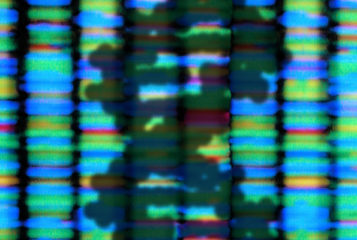There has been a rise in the number of British women choosing to give birth to fewer children following multiple pregnancy, leading to renewed calls for restrictions on the number of embryos implanted during IVF.
Figures from the Department of Health show that in 2010, 85 women expecting multiple births opted to abort one or more fetuses while continuing with the pregnancy of at least one other — a so-called 'selective reduction'. This is an increase from 59 women in 2006, and has been attributed to the rise in couples turning to IVF in order to become pregnant.
During IVF several embryos are often implanted at the same time to increase the chances of pregnancy. The Human Fertilisation and Embryology Authority (HFEA) has endorsed a campaign for multiple birth minimisation and it mandates that each clinic has a strategy in place to reduce their incidence of multiple births.
According to the Telegraph, the HFEA reports that one-third of selective reductions involved pregnancies resulting from IVF. Figures available on the HFEA's website show just over 2,300 women receiving IVF or ICSI in 2006 had multiple births - defined as twins, triplets and higher order multiples - and it says in 2009 just under one-quarter of live births following IVF or ICSI in those aged 18 - 34 years were multiple.
Over 45,000 women received IVF or ICSI treatment in 2010 and there were 13,015 reported pregnancies following treatment started in 2010.
'I would be surprised if multiple pregnancy through fertility treatment was not a significant component to the increase in selective reductions', said Professor Richard Fleming, scientific director of the Glasgow Centre for Reproductive Medicine.
'The more complicated multiple pregnancies lie almost exclusively in the IVF domain. It's a horrible decision to make but a very sensible one'.
Around three-quarters of selective reductions were conducted for medical reasons, with multiple pregnancy associated with premature birth and a higher risk of birth defects such as cerebral palsy and impaired vision.
A spokesman for the Department of Health said: 'Over three-quarters, 78 percent, of the selective terminations were performed [for medical reasons] - that there is substantial risk that if the child were born it would suffer from such physical or mental abnormalities as to be seriously handicapped
'Multiple pregnancies are generally a greater risk to the mother and the babies. The risk is greater for twins than single babies but rises dramatically with three babies or more'.
Of the 85 women opting for a selective reduction in 2010, 51 reduced twins to a single baby, 20 reduced triplets to twins and nine women expecting triplets chose to give birth to one child. Five women gave birth to twins following pregnancy with four or five fetuses.
Dr Peter Saunders, from the Christian Medical Fellowship said: 'There is no doubt that the rising use of IVF has contributed to a rise in multiple pregnancies. If prospective parents are not willing to have twins then they should not be implanting more than one embryo at a time'.
The figures were obtained from the Department of Health under the UK's freedom of information laws.





Leave a Reply
You must be logged in to post a comment.